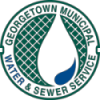
GMWSS Portal
• Make a Payment
(Credit / Debit / e-check)
• Schedule Payments
• Pay by Text
• Check Account
Balance
• View Usage History
• Sign Up for E-Bills
(Additional Info)
Water Service Lines Inventory Information
Click for additional information from the Kentucky Division of Water.
 |
Please complete the brief survey to assist in
identifying any lead or galvanized water lines on your
property. (Use your smartphone's camera to scan the QR code on the left). |
| or Click to complete the brief Water Service Line Inventory Survey. |
Click for the above Water Service Lines Billing Info Page
The Environmental Protection Agency’s (EPA) regulations on lead in
drinking water are evolving. The EPA recently revised the 1991 Lead
and Copper Rule with the Lead and Copper Rule Revision (LCRR). As
part of the revision, GMWSS will be conducting a water service line
inventory involving an inventory of both the customer-owned service
line and the utility-owned side of the service line. The inventory
must be completed by October 2024.
Protecting public health is at the core of what we do at GMWSS. In fact, as part of maintaining excellent water quality, GMWSS’ Water Treatment Plant conducts over 138 tests each day to ensure water is safe and high-quality. GMWSS’s drinking water does not contain lead when it leaves the treatment plants. GMWSS’s drinking water meets all Environmental Protection Agency standards for lead under the Lead and Copper rule. GMWSS.com/CCR contains our annual consumer confidence (water quality) reports.
Lead is rarely found in source water, however, water can pick up lead particles in private service lines and fixtures containing lead (i.e. water pipes, fixtures, and plumbing). With the Lead and Copper Rule, sampling occurs at the customer's tap-in sites with known lead service lines or lead/copper solder. GMWSS’ Water testing results are below the EPA Action Level.
Lead is a metal that is found in natural deposits in the environment. The greatest exposure to lead is from swallowing paint chips containing lead or breathing in lead paint dust. Ingestion of lead can cause health concerns for people of all ages, particularly pregnant women, infants, and young children. In children, low exposure levels are linked to learning disabilities, behavioral problems, and other issues.
Private Lead Lines
Lead can become a potential risk for drinking water in those homes that have a private lead service line or lead pipes. Older homes (those typically built before 1950) may have lead service lines on the customer's property that connect to GMWSS’ Water lines. Those water lines are the homeowner's responsibility.
GMWSS has removed all known public lead service lines in the Water Distribution system, with projects and annual service line replacements over the last 20 years. There still may be some unknown lead water lines but as they are found, those lines will be replaced. Per the federal mandates, GMWSS will be doing an inventory of its Distributions water system and the Customer’s service line to the home. We want to help you determine if there’s a lead line on your property.
GMWSS will be conducting a water service line inventory involving BOTH the customer-owned service line and the utility-owned side of the service line. We are asking our customers for help on their side of the meter. With customer assistance we can reduce the costs of the inventory.
Please conduct the brief survey and help keep everyone’s water rates affordable. As this inventory work progresses and provides valuable information, GMWSS will formulate a cost-effective plan for complying with the EPA’s LCRR and will work with each affected customer on an individual basis to discuss potential safeguards to protect their health.
• Prior to 1986, it was common for contractors to use lead solder and fixtures containing lead in homes. Until 2014, brass faucets and fixtures labeled as "lead-free” plumbing could contain up to 8 percent lead. If you feel this applies to your home:
Tips and recommendations to determine and reduce lead from fixtures and plumbing in the house.
• Learn if you have a lead service line. GMWSS will be identifying service lines from the meter to the homes as soon as possible.
• Run your water. Before drinking, flush your home’s pipes by running the tap, taking a shower, doing laundry, or doing a load of dishes. The amount of time to run the water will depend on whether your home has a lead service line or not, and the length of the lead service line. Residents should contact GMWSS for recommendations about flushing times.
• Learn about construction in your neighborhood. Be aware of any construction or maintenance work that could disturb your lead service line if they are present in your home. Construction may cause more lead to be released from a lead service line.
• Use cold water. Use only cold water for drinking, cooking, and making baby formula. Remember, boiling water does not remove lead from water.
• Clean your aerator. Regularly clean your faucet’s screen (also known as an aerator). Sediment, debris, and lead particles can collect in your aerator. If lead particles are caught in the aerator, lead can get into your water.
• Use your water filter properly. If you use a filter, make sure you use a filter certified to remove lead. Read the directions to learn how to properly install and use your cartridge and when to replace it. Using the cartridge after it has expired can make it less effective at removing lead. Do not run hot water through the filter.
Protecting public health is at the core of what we do at GMWSS. In fact, as part of maintaining excellent water quality, GMWSS’ Water Treatment Plant conducts over 138 tests each day to ensure water is safe and high-quality. GMWSS’s drinking water does not contain lead when it leaves the treatment plants. GMWSS’s drinking water meets all Environmental Protection Agency standards for lead under the Lead and Copper rule. GMWSS.com/CCR contains our annual consumer confidence (water quality) reports.
Lead is rarely found in source water, however, water can pick up lead particles in private service lines and fixtures containing lead (i.e. water pipes, fixtures, and plumbing). With the Lead and Copper Rule, sampling occurs at the customer's tap-in sites with known lead service lines or lead/copper solder. GMWSS’ Water testing results are below the EPA Action Level.
Lead is a metal that is found in natural deposits in the environment. The greatest exposure to lead is from swallowing paint chips containing lead or breathing in lead paint dust. Ingestion of lead can cause health concerns for people of all ages, particularly pregnant women, infants, and young children. In children, low exposure levels are linked to learning disabilities, behavioral problems, and other issues.
Private Lead Lines
Lead can become a potential risk for drinking water in those homes that have a private lead service line or lead pipes. Older homes (those typically built before 1950) may have lead service lines on the customer's property that connect to GMWSS’ Water lines. Those water lines are the homeowner's responsibility.
GMWSS has removed all known public lead service lines in the Water Distribution system, with projects and annual service line replacements over the last 20 years. There still may be some unknown lead water lines but as they are found, those lines will be replaced. Per the federal mandates, GMWSS will be doing an inventory of its Distributions water system and the Customer’s service line to the home. We want to help you determine if there’s a lead line on your property.
GMWSS will be conducting a water service line inventory involving BOTH the customer-owned service line and the utility-owned side of the service line. We are asking our customers for help on their side of the meter. With customer assistance we can reduce the costs of the inventory.
Please conduct the brief survey and help keep everyone’s water rates affordable. As this inventory work progresses and provides valuable information, GMWSS will formulate a cost-effective plan for complying with the EPA’s LCRR and will work with each affected customer on an individual basis to discuss potential safeguards to protect their health.
 |
Please complete the brief survey to assist in
identifying any lead or galvanized water lines on your
property. (Use your smartphone's camera to scan the QR code on the left). |
| or Click to complete the brief Water Service Line Inventory Survey. |
• Prior to 1986, it was common for contractors to use lead solder and fixtures containing lead in homes. Until 2014, brass faucets and fixtures labeled as "lead-free” plumbing could contain up to 8 percent lead. If you feel this applies to your home:
Tips and recommendations to determine and reduce lead from fixtures and plumbing in the house.
• Learn if you have a lead service line. GMWSS will be identifying service lines from the meter to the homes as soon as possible.
• Run your water. Before drinking, flush your home’s pipes by running the tap, taking a shower, doing laundry, or doing a load of dishes. The amount of time to run the water will depend on whether your home has a lead service line or not, and the length of the lead service line. Residents should contact GMWSS for recommendations about flushing times.
• Learn about construction in your neighborhood. Be aware of any construction or maintenance work that could disturb your lead service line if they are present in your home. Construction may cause more lead to be released from a lead service line.
• Use cold water. Use only cold water for drinking, cooking, and making baby formula. Remember, boiling water does not remove lead from water.
• Clean your aerator. Regularly clean your faucet’s screen (also known as an aerator). Sediment, debris, and lead particles can collect in your aerator. If lead particles are caught in the aerator, lead can get into your water.
• Use your water filter properly. If you use a filter, make sure you use a filter certified to remove lead. Read the directions to learn how to properly install and use your cartridge and when to replace it. Using the cartridge after it has expired can make it less effective at removing lead. Do not run hot water through the filter.

























